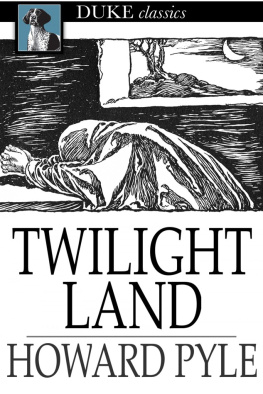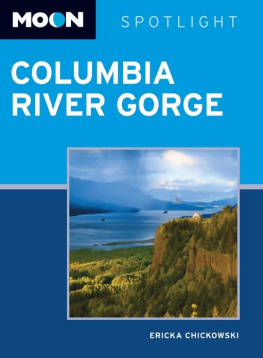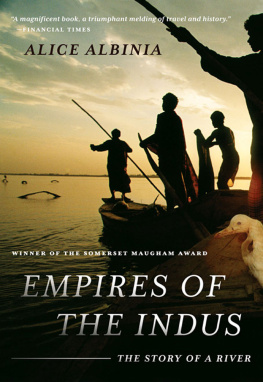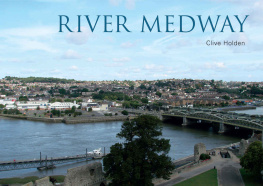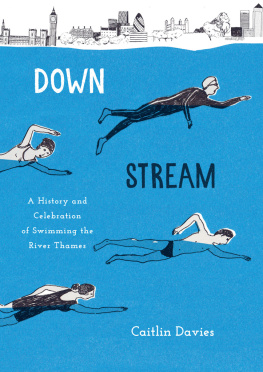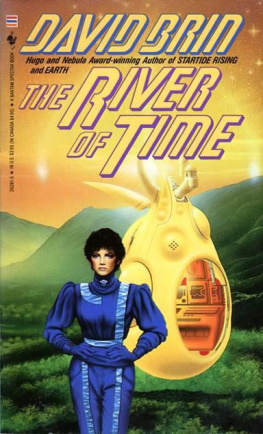Copyright 2007 by Robert Michael Pyle
ALL RIGHTS RESERVED
For information about permission to reproduce selections from this book, write to Permissions, Houghton Mifflin Company,
215 Park Avenue South, New York, New York 10003.
www.hmhbooks.com
The Library of Congress has cataloged the print edition as follows:
Pyle, Robert Michael.
Sky Time in Gray's River : living for keeps in a forgotten
place / Robert Michael Pyle.
p. cm.
Includes bibliographical references.
ISBN -13: 978-0-395-82821-2
ISBN -10 0-395-82821- X
1. Natural historyWashington (State)Grays River.
2. Pyle, Robert Michael. 1. Title.
QH 105. W 2 P 948 2007
508.797'91dc22 200600309
e ISBN 978-0-544-10870-7
v1.1112
F OR T HEA
For the A HLBERG , S ORENSON , S WANSON ,
and L ARSON families, and all the other
pioneers who made this place
And to the memory of E D M AXWELL ,
dear friend and great naturalist,
gone too soon
Here, this, is It. The world as it is, is Heaven, I'm looking for a Heaven outside what there is, it's only this poor pitiful world that's Heaven ... what there is, is ecstasy.
J ACK K EROUAC , The Dharma Bums
I would remain where I was and make the most of what I had.
J OHN H AINES, The Stars,the Snow, the Fire
Beforetimes
Going to Ground in Gray's River
"To go to ground"an English fox-hunting term, meaning "into a burrow or hole in the ground, 'to earth"'; as in "When a Fox goes to ground, after a long chase..." With respect to the digging of Foxes which hounds run to ground.
Oxford English Dictionary
Walking to the compost this morning, I was arrested by the sight of a leaf pinioned on a rush spike. The bunch of rushes grows in a pot in the corner of the heather garden. The leaf was birch, clear yellow spattered with remnant green. It hung there, impaled as it fell from the tall white wand of the birch. Shivering on the light November air, the leaf was like a moment of grace before the fall. The compost heap shone bright with still more leaves of maple, oak, and hornbeam, spattered among bracts of Brussels sprouts, over-the-hill red currants, and the collapsed brainpan of a jack o' lanternthe exuviae of a satisfied autumn and its festivals.
Returning to the house, I paused as always to rinse the white china chamber pot in the spray of a standing spigot. Just before tossing the water onto the heather, I noticed a struggling spider in the chilly swirl. Spiders up spouts suffer a well-known fate, and so it had. But rescued with an oak leaf, it unfolded just fine. When I placed it on the spigot post, I saw a rotund female of another species, a big native orb weaver, hunched up under the handle. The skinnier one crawled back into its shelter, apparently uninjured by the dunking. So the two spiders had been there together at this late date, somehow surviving the harsh frosts and heavy rains of recent mornings.
As I approached the back porch a Steller's jay rocketed off, screaming that the kibbles were all gone from the cat's dish. An elegant Anderson's slug, slender, yellow-rimmed, reticulated, glided away from the bowl too. From the doorway I noticed a flutter in a tall English oak by the drive. The first-year Townsend's warblers that had come for Thanksgiving were still there, flickering through the tawny foliage together while chickadees and kinglets loitered off to the side. The migrant warblers' lemony breasts and faces were as bright as the slug's mantle; their presence was as unexpected as a pair of spiders in late autumn, their gift as sudden and fleeting as a birch leaf on a rush spike.
ONE APRIL DAY in 1970, I drove a wide circle through southwest Washington in search of early-season butterflies to photograph. Very few were yet on the wing, and I came home with only one good shot, a linen-fresh margined white basking next to a new leaf of its host plant, toothwort. I also brought back a vision of the kind of place where I would spend most of my life. My random route took me through several broad, low valleys where streams ran down through green velvet pastures between low evergreen hills to Puget Sound or the Pacific Ocean. To an urban visitor, these valleys looked both bucolic and idyllic. The sun was out that day, giving the rural prospects an uncommon luminosity that intensified their magnetism. I decided then and there that I would someday like to live in such a valley: a place where I could see something new every time I stepped outside.
Now that they are in their fifties, as I am, many of my friends are just beginning to seek a permanent home. Work or adventure has taken them here and there, to this house and that, and at last they hope to find abodes that will see them happily into old age. They may think I settled into my long-term habitation awfully early, though it seemed none too soon to me at the time. I had grown up in a Colorado suburb, gone to college in Washington and Connecticut, lived and worked in California, England, New Guinea, and Oregon, dwelling in some twenty homes along the way. I had long idealized a rural or edge-of-wildland domicile that would serve as a "central repository" for my stuff and a warm retreat from which I could range outward into the world. I knew several biologists and writers who had indeed established such holts, but usually only after retiring from a long academic, bureaucratic, or journalistic career. What right had I, a mere whippersnapper, to a country seat?
My family had once owned several ranches in western Colorado, any one of which might have been a perfect place for me to live. But they had been lost since the Depression or before, so I had no patrimony of land to which I might repair. I would have to find and adopt my own home place. My ideal of a naturalist's abode was Trail Wood, the old New England farmstead where Edwin and Nellie Teale made their final home after Long Island became too populous for them. In his book A Naturalist Buys an Old Farm, Teale described the arduous process of finding the right place and the success that finally came through the grace of happenstance. I expected that it would be many years before it was time for me to settle, and I would have to make just such a search. The only similarity between my search and the Teales' was the good luck.
It happened like this. My first long-term job, with the Nature Conservancy in Portland, Oregon, involved a great deal of travel and furnished a ration of stress. The gallery job that my wife at that time, Sally Hughes, held was also stressful. Yet our combined salaries were too small even for the tiny shack under the abutments of the St. John's Bridge in North Portland that we considered buying. We dreamed of retreating to the country. That summer of 1978 I had a field assistant, a teenager from Ithaca, New York, named David Shaw. On weekends David and I often prowled terra incognita for butterflies within a day's drive of Portland. On August 30 we ferried across the Columbia River to Wahkiakum County, Washington, where no butterflies had been recorded. I didn't know at the time that most days it rains in Wahkiakum County. This day the sun shone hard. We found a few butterflies on pastoral Puget Island, netted a few more up the Elochoman River out of Cathlamet, then drove up into the Willapa Hills and crossed the Gray's River Divide to the west on logging roads.
We came down from the hills not long before sunset into Gray's River Valley. Three years previously, a friend named Denny Gillespie had taken Sally and me herein the rainto see a number of historic buildings and to look for butterflies. Remembering a nearby covered bridge from that visit, I proposed that we look for it. "Heck, New York is full of covered bridges," said David. "Let's get back for dinner." I began to turn left on State Route 4 to return to Portland. Then I realized that I wanted to see the covered bridge, and I was in charge. I turned west instead.
Next page






